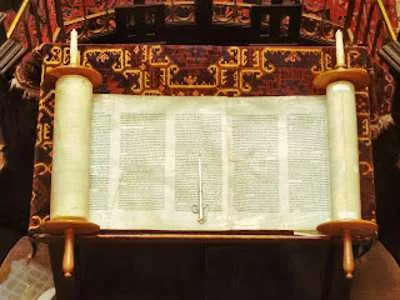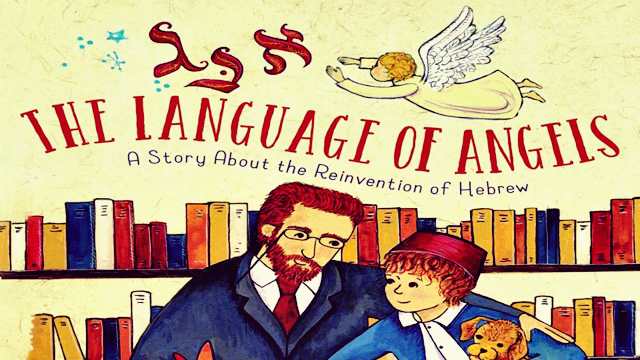On October 13, 1881, a remarkable event took place that would change the course of a language and its people forever. This date marks the first known conversation in modern Hebrew, a language that had been revived from the ashes of history. But how can we pinpoint such a specific moment in time for a language that has ancient roots?
Unique Journey of Hebrew
Unlike most languages that evolve organically over centuries, modern Hebrew is a unique case of deliberate revival. Hebrew, which dates back to around the 10th century BCE, was once a vibrant spoken language. However, after the Roman conquest of Jerusalem in 70 CE, the Jewish people were dispersed across Europe and Asia, leading to a significant decline in the everyday use of Hebrew.
For centuries, Hebrew remained a liturgical language, primarily used in religious contexts. It was akin to Latin in the Roman Catholic Church—understood and used by scholars and clergy but not spoken as a native tongue.
Revival Begins
The revival of Hebrew began in earnest in the late 19th century. Two pivotal developments occurred around 1880:
- Return to Palestine: As Jews began to return to their ancestral homeland, they found themselves speaking various languages, including Arabic, Russian, and German. However, they shared a common heritage in Hebrew, which served as a bridge among them. This shared language became the foundation for reviving Hebrew as a means of everyday communication.
- Literary Renaissance: Jewish writers in Europe recognized the potential of Hebrew as a literary language. They began translating classic works, such as Jules Verne’s “20,000 Leagues Under the Sea,” into Hebrew and creating original literature. This literary movement helped to enrich the language and make it relevant to contemporary life.
Eliezer Ben-Yehuda: The Language Reviver
At the heart of this revival was Eliezer Ben-Yehuda, often hailed as the “reviver of the Hebrew language.” Ben-Yehuda was passionate about transforming Hebrew into a modern language capable of expressing contemporary ideas and concepts. He coined new words for items and concepts that had emerged since ancient times, such as “tomato” and “electricity.”

On that historic day of October 13, 1881, Ben-Yehuda and a group of friends engaged in the first known conversation in modern Hebrew. This moment was not just a personal achievement; it symbolized the rebirth of a language that had been dormant for centuries.
Impact of Modern Hebrew
Today, modern Hebrew is spoken by millions of people in Israel and around the world. It serves as a testament to the resilience of culture and language, demonstrating how a community can reclaim its linguistic heritage. The revival of Hebrew has also inspired other language revitalization efforts globally, showcasing the power of language in shaping identity and community.
Celebrating October 13
In addition to the significance of modern Hebrew, October 13 is a day filled with various cultural and historical events. It is the U.S. Navy’s birthday, X-Files Day, and the birthday of musician Paul Simon. The day also marks the anniversary of the discovery of the Whirlpool Galaxy, National Chess Day, and English Language Day.
FAQ’s
What is Modern Hebrew?
Modern Hebrew is a revived language spoken primarily in Israel.
It’s a descendant of Biblical Hebrew, which was the language of the ancient Israelites.
How did Modern Hebrew revive?
The revival of Modern Hebrew is largely attributed to the Zionist movement in the late 19th and early 20th centuries.
As Jewish people sought to establish a homeland in Palestine, they revitalized the Hebrew language to serve as a unifying force.
Is Modern Hebrew similar to Biblical Hebrew?
While there are similarities, Modern Hebrew has evolved significantly from Biblical Hebrew. The grammar, vocabulary, and pronunciation have changed over time to accommodate modern needs.
Language Features
What is the writing system of Modern Hebrew?
Modern Hebrew uses the Hebrew alphabet, which is written from right to left.
How is Modern Hebrew pronounced?
Modern Hebrew pronunciation is relatively straightforward, with most letters having consistent sounds. However, there are some unique features, such as the guttural sounds and the distinction between voiced and voiceless consonants.
Is Modern Hebrew a difficult language to learn?
Like any language, learning Modern Hebrew requires dedication and practice. However, it is considered a relatively easy language for English speakers to learn due to shared Semitic roots and the straightforward writing system.
Cultural Significance
What is the role of Modern Hebrew in Israeli culture?
Modern Hebrew is the national language of Israel and plays a central role in its culture.
It is used in education, government, media, and everyday life.
Are there any dialects of Modern Hebrew?
While there are regional variations in pronunciation and vocabulary, Modern Hebrew is generally considered a unified language.
How is Modern Hebrew used in literature and music?
Modern Hebrew has a rich literary tradition, with many famous writers and poets. It is also used in Israeli music, both traditional and contemporary.
Can native Hebrew speakers understand Biblical Hebrew?
While modern Hebrew speakers can understand some Biblical Hebrew, there are significant differences in vocabulary and grammar that make it challenging for them to fully comprehend.
Conclusion
The first known conversation in modern Hebrew on October 13, 1881, represents a pivotal moment in linguistic history. It highlights the extraordinary journey of a language that was revived from a sacred past to become a vibrant means of everyday communication. As we celebrate this date, we honor not only the language itself but also the cultural identity and resilience of the Jewish people.
So, the next time you hear someone speaking Hebrew, remember the incredible journey it has taken to reach this point—a journey that began with a simple conversation over a century ago!

